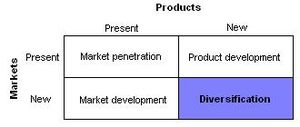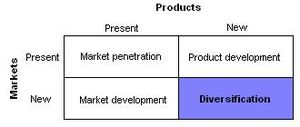The Death of Traditional Marketing

Bill Lee may have stirred up some controversy when he contributed to the Harvard
Business Review in August with his article "Marketing is Dead," but his sentiments and facts are nothing if not accurate. Marketers may not want to admit that traditional marketing has been rendered useless by new marketing strategies, but the attitudes of consumers confirm that old marketing strategies just aren't working in the modern era.
Consumers Aren't Listening
To begin with, consumers are simply not listening to traditional marketing strategies any longer. The effectiveness of billboard ads, television commercials, radio spots, magazine centerfolds, and newspaper ads is waning. Consumers have been so inundated with these strategies for so long that the effectiveness of traditional marketing campaigns has worn off. Also, consumers don't want to get their information from the brand selling products. They prefer to gather information from other sources such as social media and blogs.
Traditional Marketing is Too Expensive
Another reason why traditional marketing is falling out of style is the cost to effectiveness ratio. Traditional marketing requires businesses to hire teams of marketers to evaluate consumer populations, perform research, develop strategies, buy ad space, hire artists and copywriters, and pay to distribute marketing strategies throughout the nation. New marketing strategies, like social media marketing and blogging, cost almost nothing in comparison. Which marketing strategies are businesses seeking? It comes as no surprise that many brands are choosing the more cost-effective route.
Traditional Marketers are Out of Touch
The real problem with traditional marketing, however, comes down to one truth: marketers are out of touch with the consumers to whom they are marketing. This gap between what customers want and what traditional marketers are offering is the reason why so many consumers are looking elsewhere for ideas about which products to buy and which brands to promote.
Traditional marketing requires strategy, research, and even manipulation. Marketers choose the actors to pose for advertisements, the colors and fonts to use on billboards, and the slogans that capture the most attention. They spend months developing new strategies that have virtually no effect on the consumer population. The reason for this waste is that marketers are out of touch with consumers. Effective marketing requires direct communication with customers, personal engagement with clients and individualized approaches to the consumer population.
Modern Consumers Crave Community
Modern consumers are sharing content and information with other consumers more frequently and more easily than ever before. Today, the average consumer will not buy any product until he or she has read reviews of the product posted by at least ten other users with a positive experience. Many consumers do not trust the comments and product information posted on a brand's website. They want to go to unbiased forums and read what others are saying about a product or service.
This helps to create a community of consumers who essentially look out for one another. Unless businesses are able to facilitate this type of consumer sharing and steer it to their advantage, marketing strategies will fail. Traditional marketing is incapable of creating community, which contributes to its irrelevance.
Modern Consumers Crave Individuality
The modern consumer does not respond to mass-market tactics such as giant billboards and magazine spreads. Instead, consumers are responding more and more frequently to ad campaigns that are individual in nature. For example, a brand that sells lawn and garden equipment may use social media applications to find consumers who are specifically looking to create an outdoor living space. By evaluating social media posts, clicks, and shares, businesses can find consumers who are looking for outdoor living space information. They can then send those social media users specific information that will appeal to them as individuals.
Traditional marketing involved casting out a hook loaded with bait and waiting for the consumers to swim toward the hook. That strategy isn't working any longer. Now, it is the marketers' responsibility to evaluate consumers' needs and desires and present them with solutions. The modern consumer is highly individualized and independent. Unless a marketing strategy recognizes and utilizes this independence, it will likely be ineffective. One very effective way this is being done is with content marketing.
Modern Consumers Crave Transparency
The modern consumer is disenchanted with advertisements that feature supermodels using a brand's products. Nobody trusts this type of advertising anymore, and the effectiveness of traditional ads is suffering because of a shift in consumer perspective. Instead, consumers want brands that are willing to be transparent with consumers. Customers are attracted to businesses that present the good with the bad, businesses that provide high quality information about a variety of industry subjects, and businesses that appear to care about consumers. Transparency is the new wave of modern marketing, and traditional marketing practices are simply incapable of promoting this honesty and trustworthiness.
Traditional Marketing Can't Compete
There are thousands of businesses that are trying to desperately cling to traditional marketing strategies simply because that is what the marketing professionals are comfortable with, and that's what they know best. Marketers who experienced their peaks a decade ago know how to design great billboards. They know how to create a thirty-second TV spot. They know how to illustrate a flashy and attractive magazine advertisement spread. No longer are these strategies effective in making more money for businesses.
The problem is that these traditional marketing strategies simply cannot compete with the popularity of alternative marketing strategies that are being employed by savvy businesses. New marketing professionals know how to relate to the modern consumer. They are creating social media marketing strategies, content marketing strategies, and mobile marketing strategies that cut through a consumer's desensitization and generate a profitable effect on potential customers.
Traditional marketing is an advertising format that can't compete with new devices like smart phones and tablet computers. It cannot help to generate a community of consumers who trust one another and make helpful product recommendations. It is incapable of approaching each consumer as an individual and tailoring the ad approach to that consumer's personal likes and dislikes. Traditional marketing is perceived as dishonest, slanted, and self-serving. None of these characteristics is appropriate for marketing to the modern consumer. What's the conclusion? Traditional marketing is dead, and businesses need to look to fresh marketing strategies and tactics if increased profits are ever going to occur.















New post: The Death of Traditional Marketing http://t.co/kIV2344h
RT @eobadia: Did you know? “The Death of Traditional Marketing” http://t.co/Hx7ZAIjb